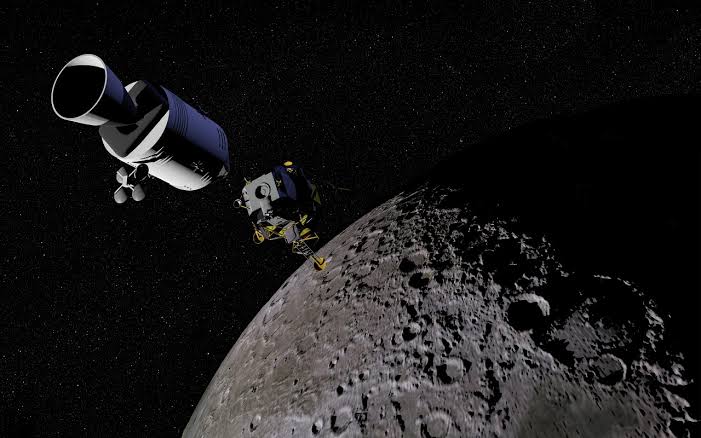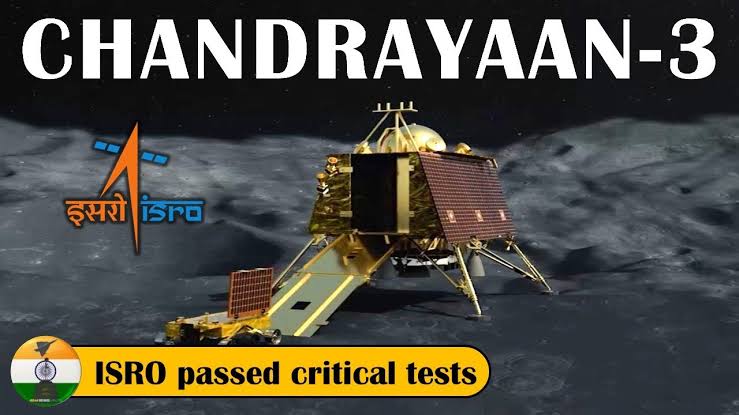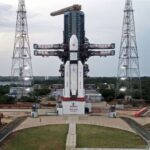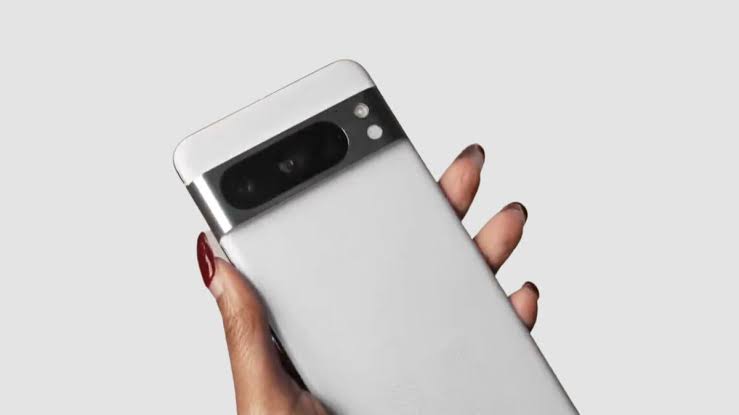
ISRO, India’s National Space Agency, made a big announcement when it said that the Chandrayaan-3 satellite and the latest launch vehicle, GSLV-Mk3 or LVM3, were successfully put together.
The space agency plans to send India’s third journey to the moon into space in the middle of July, between July 12 and 19. The goal of this mission is to try again to land tools safely on the Moon.

The Chandrayaan-3 project has a lander named Vikram and a rover named Pragna. But unlike the last trip, Chandrayaan-2, they won’t be going with an orbiter. Instead, it will be replaced by a power module.
After the failed landing attempt in September 2019, ISRO changed the lander in a number of ways to make it work better. One thing that was done to improve the launcher was to strengthen its legs. The new design of the lander means that it can handle landing at higher speeds than the old one. ISRO has also made other changes based on what it learned from Chandrayaan-2’s mistakes. ISRO’s Chairman, S. Somanath, said that most of the changes were made to fix problems with the landing. By increasing the landing velocity tolerance from 2m/s to 3m/s, the lander’s legs will be better able to handle the landing without falling or breaking.Another scientist who worked on the Chandrayaan-2 project made it clear that a landing speed of about 2 metres per second is safe and ideal. The fact that the tolerance has been raised to 3m/s gives the rover a cushion in case the best conditions aren’t met, so it can still do what it was designed to do.
The second change that was made to the lander was to make it hold more fuel. This change makes the landing more resilient to disturbances and gives it the ability to go back if it needs to. This adds an extra layer of safety. ISRO has also added a new monitor called a laser Doppler velocity metre, which will measure the surface of the moon. This monitor will tell you what the parts of three velocity vectors are by using laser source sounding. This information will be mixed with measurements from other instruments to make measurements more accurate.
ISRO has also made changes to the software to make it more tolerant of things going wrong, like when the engine, power, or sensors stop working. Also, the fifth engine in the middle, which was added at the last minute to Chandrayaan-2, has been taken out. This change had to be made because the weight of the lander went up by almost 200 kg. Because of this, you will need at least two engines to land. You will no longer be able to land with just one engine.In order to make sure there is enough power, ISRO has made the solar panels longer and raised the area of each panel. Vikram will still be able to make power even if the lander lands in a different way and is not directly facing the Sun.
Chandrayaan-3 is set to be launched between July 12 and July 19. But it will take about 45 days from the chosen launch date to get to the Moon. The landing needs to happen at the beginning of a lunar day so that the lander has 15 days to do its job well. The launch date is picked based on this factor.
Most of the work done to get ready for the trip has been testing. ISRO has done more tests in the last two years than it did during the Chandrayaan-2 mission. These tests have covered a wide range of situations, such as driverless flights, helicopter flights, crane-mode landing simulations, drop tests, and software simulation testbeds. The goal was to carefully look at possible mistakes and ways to fix them.






